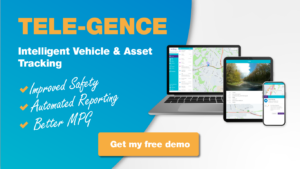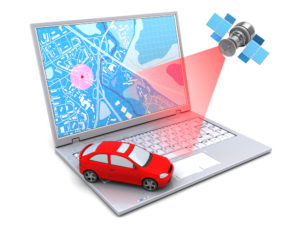Keeping carbon emissions low should be a major priority for any fleet manager today. Firms that don’t manage this will spend more money and contribute to climate change. That’s not good for either your balance sheet or your business’ reputation.
As such, it’s vital you have a plan for tackling your fleet’s emissions. This is especially important for larger businesses with many vehicles, but smaller firms can also benefit. And one way in which any company can reduce its carbon footprint is by having a quality telematics solution.
The importance of cutting emissions
The UK’s transport industry is still a major source of greenhouse gases. According to government figures, the sector was responsible for 34 per cent of the UK’s carbon emissions in 2019. It also noted the “large majority” of this comes from road transport.
Therefore, the government has pledged to cut greenhouse gas emissions by 68 per cent by the end of the decade and be net carbon zero by 2050. However, this won’t be possible without greatly reducing vehicle emissions.
For businesses, cutting carbon emissions is a vital part of any corporate social responsibility (CSR) plan. Customers expect firms to take a proactive attitude to this area and increasingly factor environmental performance into their buying decisions. For instance, research by the Carbon Trust suggests two-thirds of people (66 per cent) feel more positive about companies that can demonstrate they are making efforts to reduce emissions.
Aside from this, lower emissions go hand in hand with reduced petrol and diesel costs. Cutting down on carbon dioxide naturally means using fuel more efficiently, which is also good for your bottom line.
There are a number of methods firms can use to help reduce their fleet’s emissions, such as adopting more fuel-efficient vehicles, or even switching to hybrid or full-electric power. But these solutions often require major investments. However, there is a way any business can cut its emissions without large-scale changes to its fleet, and that’s by adopting telematics.
How telematics works
Telematics tools are increasingly popular among business fleet managers for a number of reasons, and making operations greener and more efficient is a key consideration.
They work by monitoring the performance and status of your vehicles in real-time, using a variety of different technologies. For instance, GPS tracking provides an accurate picture of where your cars and vans are at all times, as well as useful information such as its speed.
Meanwhile, sensors in the vehicle that connect to the central computer can record a range of detailed data. This can include diagnostics to alert you to any potential maintenance issues, but it can also monitor control inputs to build a picture of how your employees are driving.
These are all sent back to the business wirelessly and in real-time. This means fleet managers always have complete insight into where their vehicles are and how they’re being used.
You may even be able to compile accurate reports on miles per gallon and exhaust emissions, which can let you see the impact any steps will have.
Three ways telematics reduces your fleet’s emissions
With this information in hand, you can take a number of steps to reduce your fleet’s emissions. Here are three benefits you should be able to quickly see as a result of car telematics.
1. Better route planning
It goes without saying that the fewer miles you drive, the less emissions you’ll release into the atmosphere. In this regard, a good telematics system can be highly valuable. When coupled with a smart routing system, this can spot any inefficiencies and suggest improvements.
For example, vehicles that have to stop and start a lot will create large amounts of emissions. Therefore, tailoring routes to minimise this can have a significant impact. Similarly, reducing the amount of backtracking vehicles have to do between stops not only makes operations more efficient, but also reduces carbon output.
2. Reduced idling
Another effect of this data will be to reduce the amount of time vehicles spend idling. This is one of the biggest contributors to carbon emissions and air pollution. Indeed, it’s actually already an offence to leave a vehicle idling unnecessarily, with drivers liable for a £20 fixed penalty notice if they keep their engines running while parked on public roads.
Telematics can help with this by helping drivers avoid traffic jams, roadworks and other occasions where drivers may be sitting stationary for long periods. However, it can also help alert you to drivers who are displaying poor practices.
For example, if an employee turns on the engine and leaves their car to warm up for ten minutes on a cold morning, you can see this and step in. The same is true if drivers are leaving engines running while they make deliveries or any short stops.
This can make a real difference. For instance, one Tele-gence customer, JJ Food Service, reported it had been able to reduce idling time by 70 per cent since adopting the technology, with this helping cut its carbon emissions by two per cent.
3. Better driver behaviour
Changing driver behaviour isn’t limited to reducing idling, however. Vehicle telematics systems can also measure inputs such as throttle and brakes, how much a driver revs the engine and their steering actions. Hard accelerating and braking uses more fuel, which in turn means more emissions.
By keeping a close eye on this, you can spot who the worst offenders are for these poor driving techniques, then arrange education and training. With easy-to-use reporting tools, you can even create league tables that rate your employees’ performance.
At the same time, this data can be used to crack down on problems like speeding. As well as being a safety issue, higher speeds mean greater emissions, so there are several benefits to tackling this. With systems that can give real-time alerts if a driver is breaking speed limits, you can act quickly and stop bad habits forming.
None of this is possible without detailed telematics tools and effective reporting software. But with these solutions, you can track emissions in real-time and gain insight into exactly what impact your efforts are having. This can also prove useful when compiling CSR reports or otherwise demonstrating your commitment to going green.
If you want to know more about how telematics tools like Tele-gence can help reduce your carbon footprint and save you money, get in touch today!















